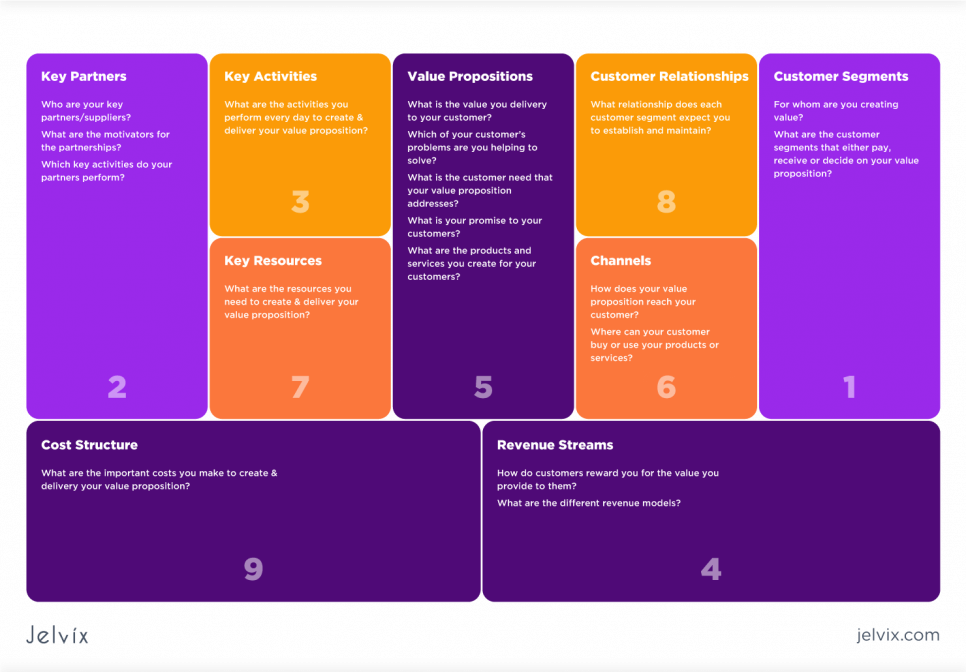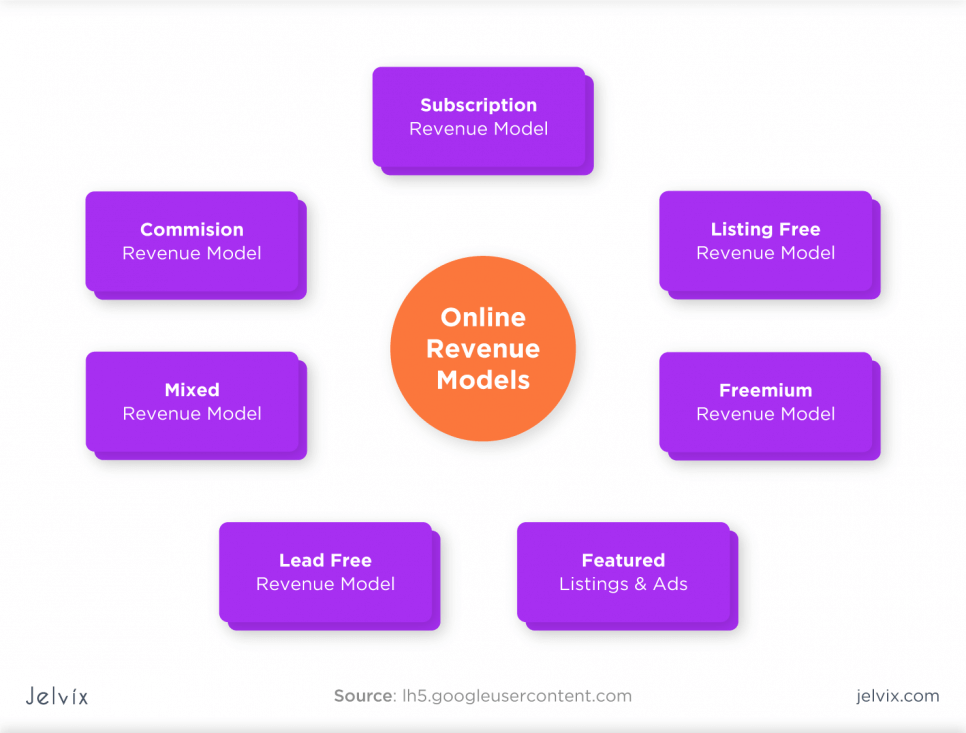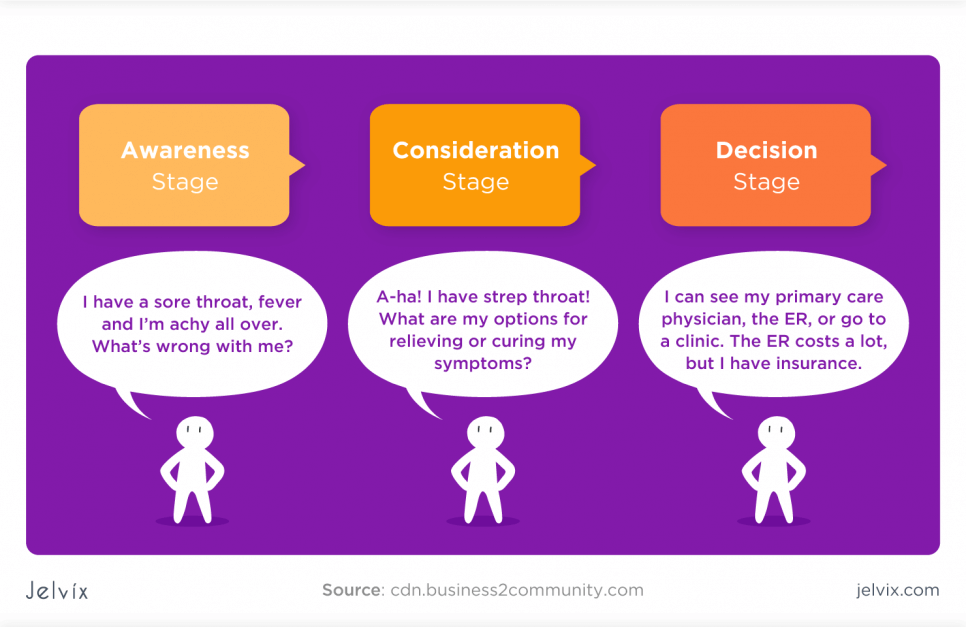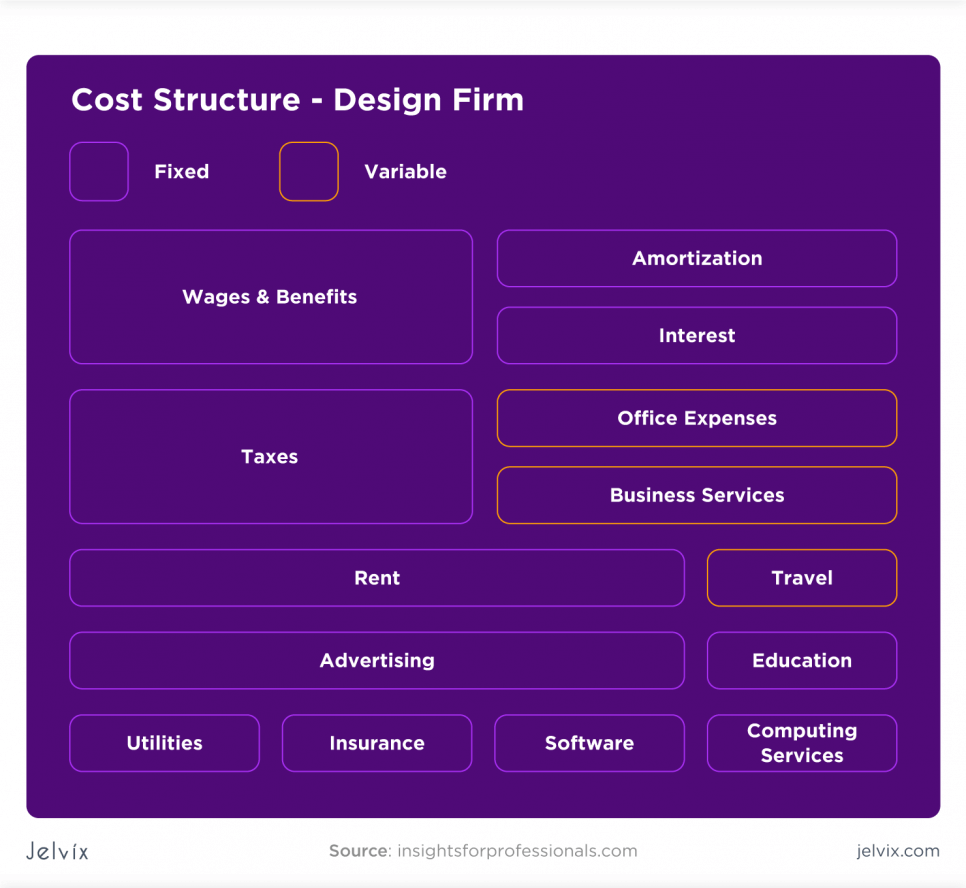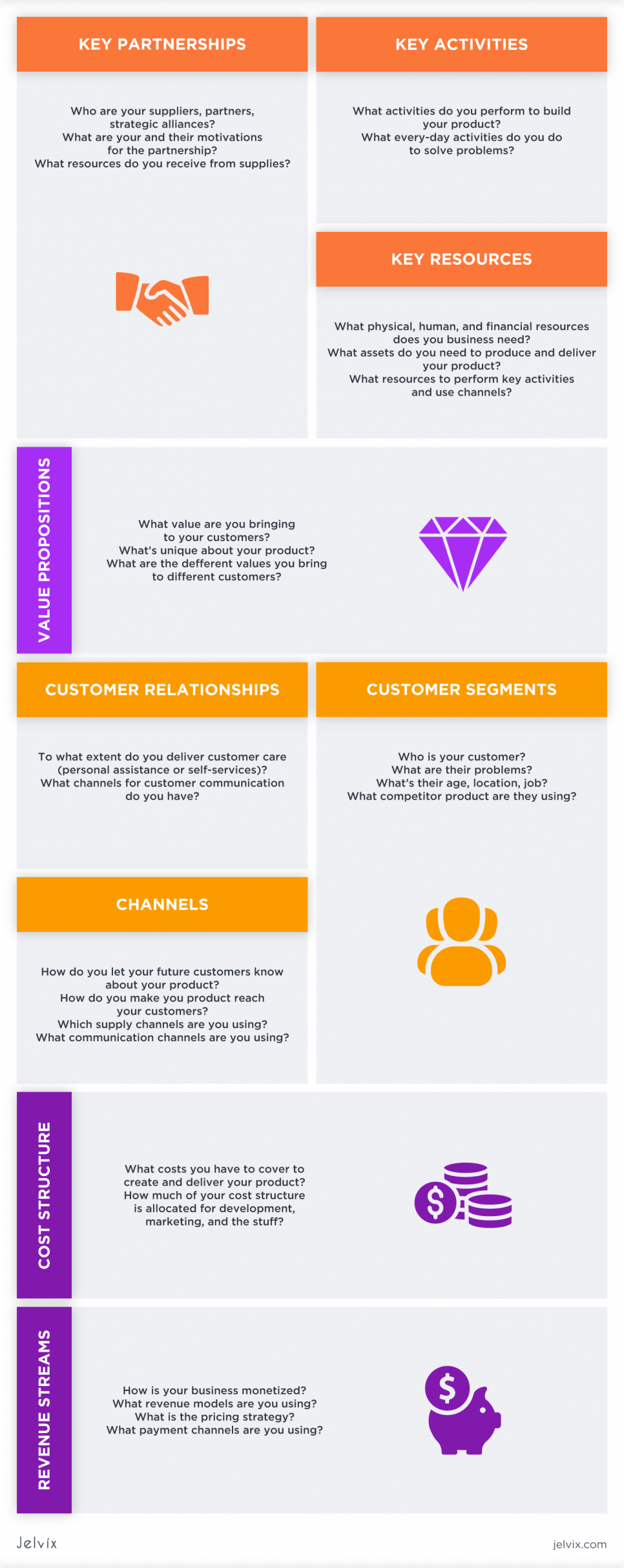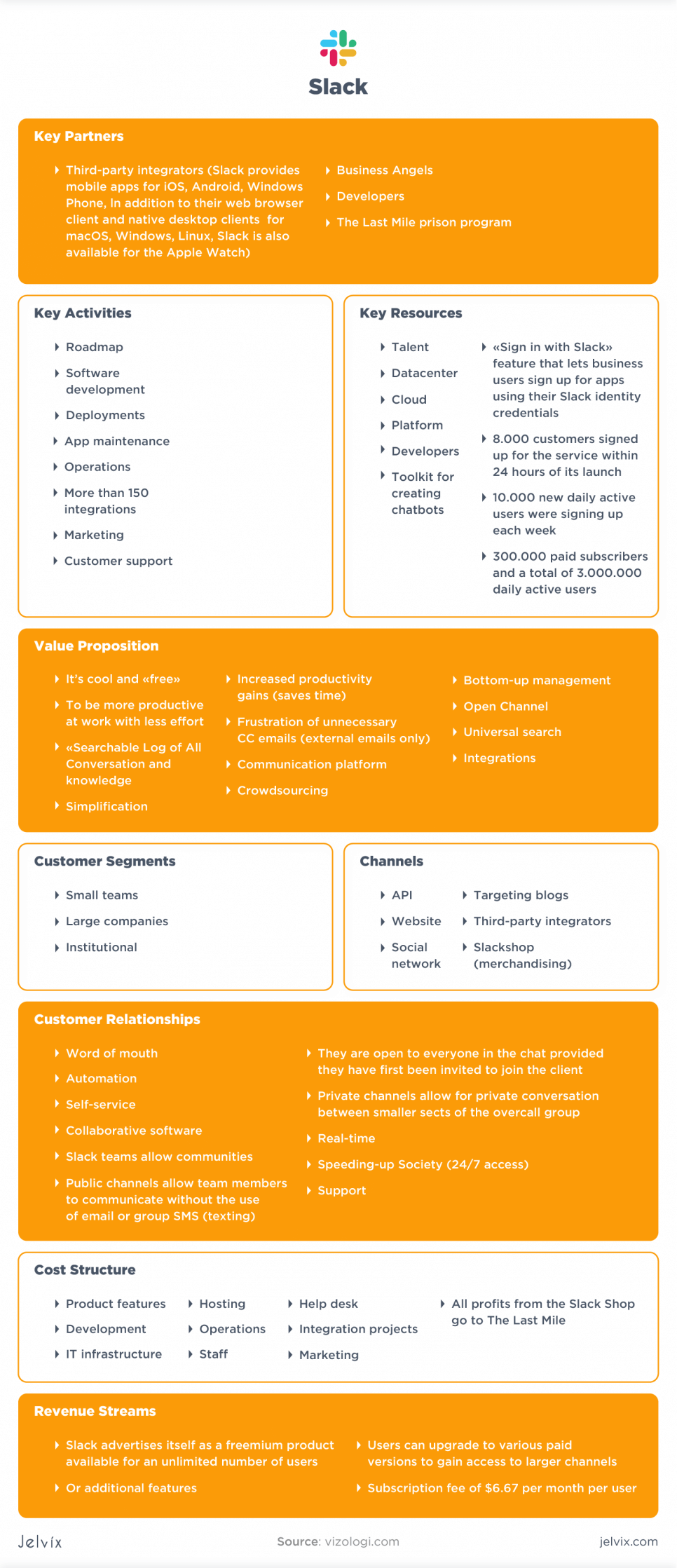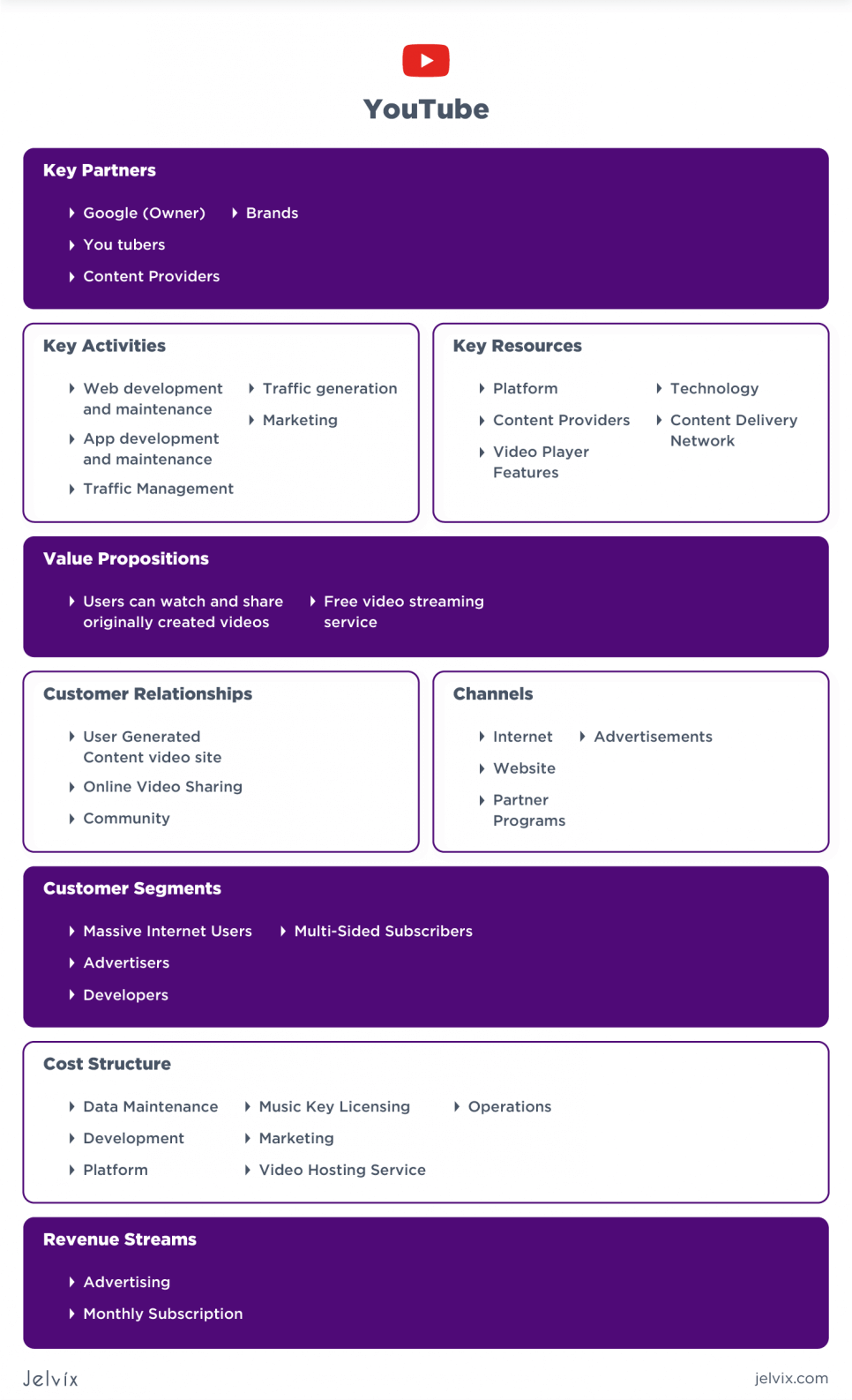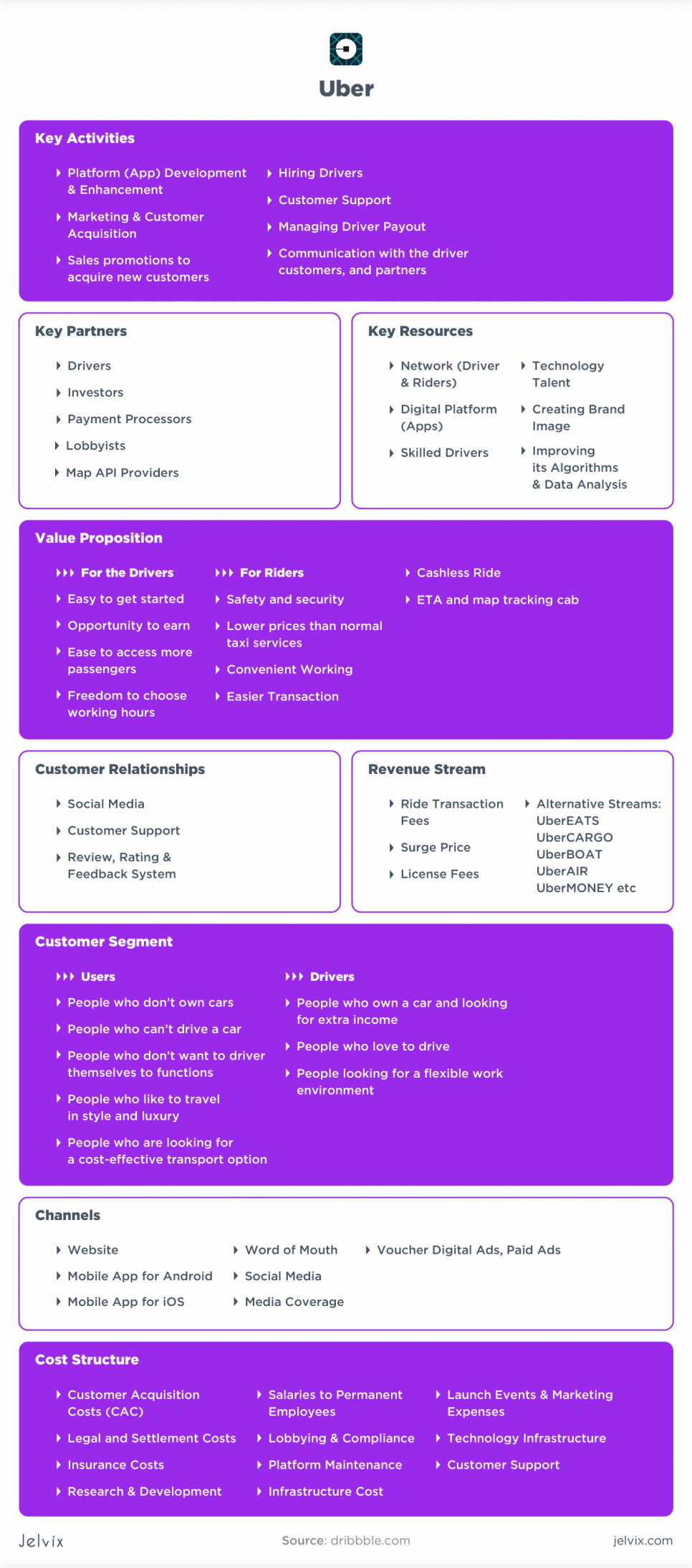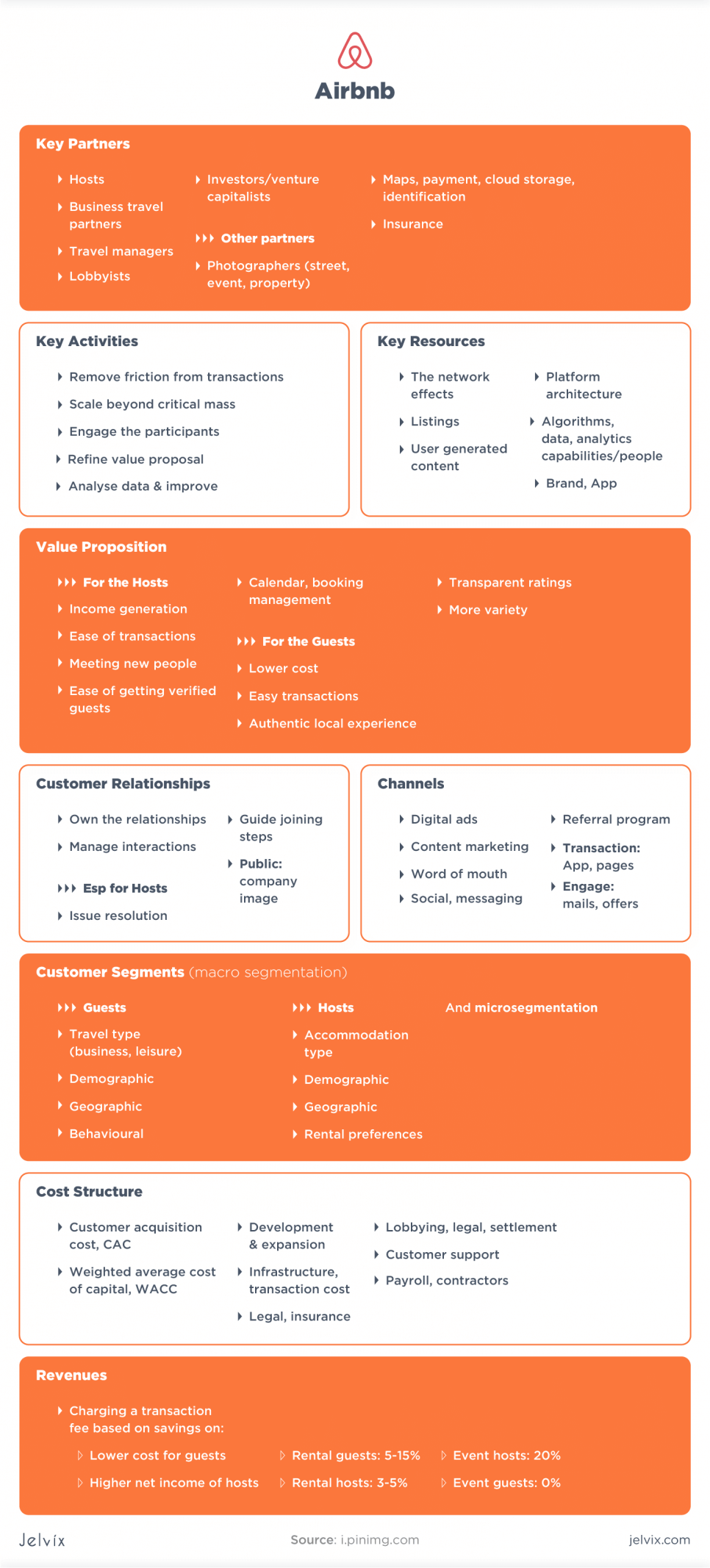Over the last decade, the approach to planning and organizing a business has changed significantly. In the past, business owners created extensive business plans that described the detailed specifics of their value proposition and operations. These plans aimed to foresee the situation over a period of decades.
However, the ever-changing startup climate that emerged over the last decade made this approach irrelevant. Spending time preparing business plans that end up being detached from reality led to increased expenses. After all, no matter how good your business plan is, it might not account for global economic shifts, technological disruptions, or crises such as the COVID-19 pandemic.
What’s a Business Canvas?
Business canvas, also known as a lean business plan, is a time-saving approach to business planning, opposed to traditional planning methods. Rather than describing the detailed vision, mission, operations, it answers key questions – and the team derives the conclusion from this answer.
Business model canvas is more attainable than a business plan. Instead of describing the abstract vision, the document focuses on answering the following questions:
- What is the product/service?
- What is the main value offered to a customer by a company’s product or service?
- How much does it cost to start a business? What’s a brief estimate of major expenses?
- What are your business key partners?
- Who are the main customers? Business canvas can consider both primary and secondary target audiences.
- What are the main distribution channels and approaches to managing them?
The Format of Business Model Canvas Explained
The main advantage of switching from plain-text plans to visual canvas is its readability. Here’s a rundown of differences compared to the traditional approach.
- The document volume: just one page versus old-fashioned 20-30-page documents;
- Clear structure: each section of a business model canvas is located within its “square”;
- Fewer words, more meaning: the more concise canvas is, the better it’ll convey its key points;
- The style: no sales talk on technical jargon, canvas describes the business model in everyday language;
- Focus on practical matters: business model canvas features useful answers to urgent questions. No information is entered “just in case.”
The Structure of Business Model Canvas
Business model canvas is easy to read because it always follows the same format. Investors, stakeholders, partners get used to seeing particular information where it belongs – so that everyone is literally on the same page.
- Sections always follow a precise order. For example, the cost structure is always in the left bottom part together with revenue streams.
- All sections are distributed based on their meaning. Key partners, activities, and resources are located together – because these aspects are closely related. Similarly, cost structure and revenue streams belong in the same row.
- More opportunities for branding. Since canvas encourages visual representations, businesses can show their tone of voice and approach clearer. Sure, there’s a format to follow, but deviations are possible in the tone of voice, fonts, narration style.
The categories on the left side of the canvas require investments and nurturing. The aspects described on the right side refer to revenue-generating means. This is called a left/right split of the business canvas.
This article will give a practical guide on how to describe business concept examples and analyze real-life business models. With a business model canvas, the entire team will have one-page guidance on developing a business model.
Customer Segments
To define customer segments, you need to analyze your clients by demographic and behavioral characteristics. There are many ways of defining user performance and performing customer analysis, but here are few ideas.
- Basic demographic characteristics. Split your customers into segments by gender, age, location, occupation. These qualities will influence their behavior later on and allow you to perform basic targeting.
- B2B vs B2C segmentation. Often, businesses tend to gravitate to one or the other, but business models combine both. For instance, if you are building a booking or tourism-related platform, you interact with businesses and individuals. These users will have different needs and challenges.
- Usage habits. Software development companies focus on types of devices, operating systems, browsers that users normally use.
- Purchasing trends. You can segment users by their favorite product categories, time of making a purchase, frequency, etc.
Business canvas is supposed to be brief – so the best strategy is to choose 4-5 leading segments and focus on them. These should be the user types that have the potential of generating the most revenue for your business.
Key Partnerships
Business canvas focuses on tangible aspects of business operations, and partnerships are among its key pillars. For this section, listing all partners is unnecessary. If you don’t have specific names in mind yet, you can list the types of partnerships and briefly describe strategies for attracting them.
As a software development company, our clients and we typically consider the following key resources in the business model canvas.
- Suppliers: e-commerce stores, marketplaces, delivery applications rely on businesses that can steadily supply high-quality products. In your business canvas, list requirements for a supplier.
- Technical collaboration: to build the best product, development companies often need to cooperate with others. This section can feature commercial APIs, payment gateway partnerships, cooperation with development teams and agencies, and outsourcing providers. These businesses are also key partners of your business.
- Cooperation with competitors: if there’s a strong player on the market, smaller businesses often team up to gain visibility. If you are entering an established field, consider looking for smaller competitors and making them a partnership offer.
One of the main advantages of business canvas over other methods is its focus on partnerships. Too often, businesses don’t think about cooperation out of the box and miss out on opportunities. Building a business canvas’s structure motivates your team to consider these options.
Key Activities
The operating model canvas describes your company and product’s processes to solve its target problems. For instance, for Uber, the key activity would be connecting drivers to clients and overseeing the safety of cooperation. Key activities tend to vary as the company scales, so most businesses frequently update this business model canvas section.
The key activities of most IT businesses
- Product ideation and development. A tech company’s main value lies in its product. Design, development, and testing are key activities that directly influence business success.
- Marketing. To reach new users and keep the existing ones satisfied, you need to plan marketing activities. This includes digital marketing and its components – Search Engine Optimization, content management, social media management.
- Sales. Sales activities allow companies to continually generate revenue, communicate with clients, and stay in touch with direct customer needs. Pre-sale and sale processes should be listed as one of the key activities in the canvas.
- Customer support. If the product is not working properly, or a user can’t understand the interface or functionality, customer support should promptly intervene. For an IT business, focusing on customer support quality is crucial for maintaining a good reputation. For instance, Google Cloud’s lack of customer support is what drives many away from embracing an otherwise great solution.
- Distribution and logistics. For businesses that deal with e-commerce and sell physical goods, distribution and logistics are key business model activities. Business model canvas should have information on responsible team members, costs, and requirements for the distribution cycles.
- Public relations. If a business is built around a community, communication and community management are key business activities. Public relations are particularly important for NGOs and educational services.
The list of key activities is a defining feature of the business model. When you understand what operations are the most crucial for your business, you have a better idea of the end value. The key activities define your unique value proposition, operation costs, risks, and partnerships. This is why it’s the most important section in the entire strategy canvas template.
Learn more about the main stages of product development lifecycle to build a sustainable product.
Revenue Streams
Revenue streams also referred to as monetization, sum up your business strategies to leverage profit. A lot of businesses choose a single monetization strategy, while some combine multiple approaches. As a software development company, we can sum up the most common revenue streams for software businesses and tech-based models.
Advertising. Users use the application for free; however, some of their personal data might be used for advertising targeting. The application offers the time and attention of their users to businesses – and gets paid a commission. It’s a great business model for attracting more users, as the service remains free.
However, to generate a lot of profit, it’s essential to have many users on the service. Advertising strategy, among others, is used by Facebook, Twitter, Youtube, Google, and others. It’s a common one for mobile applications and games.
Subscriptions. To use a service, a user needs to pay every month, week, or year. It’s a common model for software-as-a-service, media platforms, learning services, online publishing, and entertainment. On-demand content providers like Spotify or Netflix use this business model with premium-level publishers like Quartz or The New Yorker.
Affiliate Marketing. The platform earns revenue by referring users to other products. Affiliate systems calculate revenue by tracking visits and purchases with on-page pixels and promo codes.
Affiliate marketing is frequently used among influencers (like when a sponsoring brand gives a Youtuber a promo code) and blogs (when a niche blog publishes a list of best tools to use or collects the best Amazon listings). If recommendations correspond to users’ needs, affiliate marketing can benefit users, referring platforms, and partners.
Donations from users. If you’d like to keep offering your service to the public for free without selling away user data, donations are another option. PayPal provides a donation getaway that can be embedded on the blog, application, or web service.
This strategy is common for businesses with a strong social mission and requires high user loyalty. Such business canvas examples include Wikipedia, The Guardian, and Khan Academy (the education platform that recently received a 5 million dollar donation from Elon Musk).
Freemium. This business model offers basic features for free and provides updates on a paid subscription. It’s common among SaaS and publishing businesses. Use examples include Medium (users have a certain number of free stories every month) and Grammarly, where a free version recommends basic corrections.
Commissions. Fee-based monetization is common for marketplaces, APIs, payment gateways. The use of service is typically free, but the intermediary withdraws a fee once a transaction is made. The commission can be fixed regardless of the purchase amount or depending on the percentage. This business model is used by Uber, Amazon, BlaBlaCar, and other services.
Value Proposition
The Value Proposition is a concise sentence or, at best, paragraph that summarizes your company’s offer. It depicts users’ problems and ways to solve them. Let’s take a look at real value proposition canvas templates to make things more transparent.
- Slack’s value proposition is summarized in their slogan – be less busy. The full version is more specific: Slack is where teams can collaborate, send important information to the right people, and find tools when and where users need them. Still, the three-word slogan reflects the gist of it pretty well – after all, the purpose of Slack merely is making users less busy.
- Paypal has two sets of value propositions – one for buyers and one for sellers. The sellers-focused version promises convenience, low cost, and security. Online stores can be sure that the payment will go through on any browser, with a low commission, and user data won’t be compromised. For buyers, the value proposition is focused on convenience, flexibility, and security. It takes little time to make a payment, it can be done from any device and browser, and all data is safe.
- Amazon is a super-aggregator of vendors and buyers, where buyers can find whatever they need at a given moment, and sellers can reach large audiences. The company’s value proposition is based on the platform’s functionality and popular community.
Distribution Channels
At this point, you can answer two major questions: what is your value, and who needs it. However, the picture is incomplete without knowing how the value will be delivered to customers. Answering this question is the responsibility of the “Distribution channels” sections.
To plan channels in the business model canvas, we recommend getting acquainted with the buyer’s journey. In a nutshell, it consists of three stages:
- Awareness: the customer is aware of the problem but doesn’t yet know how to solve it. He’s not considering any particular help so far. It’s an exploratory stage.
- Consideration: the customer is aware of the importance of the problem and is ready to consider looking for help. At this point, the user is exploring multiple options, comparing pricing, advantages, reviews.
- Decision: the client spent a lot of time exploring the market and is ready to commit to the final option. At this point, all a customer needs is the last push that will fully persuade towards making a purchase.
A company should have distribution channels for all three stages of the buyer’s journey. It’s achieved with focused content marketing, Search Engine Optimization, email marketing, social media management. Here are some of our distribution channels – just to give you an idea.
Distribution channels in a business canvas example
- Company’s blog: Jelvix has a blog with in-depth guides like this for users in the awareness and consideration stage. Users get to know their problem better and move to the consideration stage.
- Newsletter: once a user considers our blog useful, the next option is to subscribe to our newsletter. This is where we inform about new content, special offers, additional materials (like free e-books or whitepapers).
- Case studies. When users are deciding on partnering with the Jelvix team, they usually take a look at our case studies. Often, they reach out to us directly – and this is where the sales team comes in.
- Youtube channel. Often, clients in the awareness stage come to us from Youtube. They want to see an explanatory video that answers their questions – and this is how they come across our content.
Distribution methods require a lot of investment at the early stages, but ultimately, they keep your business running in the long run.
Key Resources
To execute plans outlined in the canvas, you need resources. For tech companies, this involves development, design, testing teams, HR specialists, security experts. Other things to consider are server costs, maintenance fees, API costs, office space, hardware, software (development environment, automation scripts, management tools).
The business canvas should distinguish between already available resources and those that still require investments. To avoid leaving anything out, we recommend grouping resources into human, financial, intellectual, technical, and physical ones.
- Physical resources: office space, furniture, computers all fall in the realm of physical resources.
- Intellectual resources: if you need to acquire educational resources, patents, copyrights, creative licenses, these will be expenses on intellectual needs.
- Technical resources: we could consider those as an extension to intellectual resources, for tech companies, this category is one of the most relevant one – and it deserves own spot. Such resources include hardware for testing, development environments, emulators, additional tools, APIs, server cost, maintenance fees, etc.
- Human resources: development, design, testing teams, marketing specialists, sales and customer support department, legal and HR teams – everyone involved in your direct business operations falls into this category. These resources don’t have to be limited to the in-house team – you can include freelancers and contractors.
- Financial resources describe funds that the company already has and strategies for obtaining those in the future. You can plan out investments, loans, crowd-funding campaigns, strategic customers, and others in this category.
Customer Relation Strategy
To plan a business model canvas for customer relationships, you already need to understand the specifics of your target audience, value proposition, main activities, and available resources in sales, support, and marketing departments (all this was described in other sections). So, in this section, we suggest focusing on building and maintaining a customer relation strategy.
- First contact: what are the ways for your users to contact the company. The most common ones are on-site forms, email communication, phone calls, and Skype meetings. Which contact data is public to users, and what has to be obtained after direct contact? Specify these requirements.
- Pre-sale process. Canvas should describe the value that your customer receives on the pre-sale stage. In software development, it’s often done during the discovery session. A development team offers a free analysis of a business model and provides estimates.
- Sales meetings. Describe who’s responsible for converting qualified leads into sales. What are the channels of communication (Skype, Zoom, phone calls, in-person meetings, negotiation)? Establish the duration of such a cycle.
- Finalization. When is the sale process considered finalized? What are the documents that parties need to sign for sale to go through? What data does a customer relations team need to finish the process?
- Communication. Keeping in touch with existing clients is as important as attracting new ones. What are the ways to stimulate the next purchases? This is where you can describe special offers, bonuses, loyalty programs.
The customer relationship section usually describes programs for maintaining and attracting clients, communication strategies, and technical resources (software, browser extensions, social media).
Cost Structure
The allocation of resources depends on your field and business model. As a tech company, we can give you an idea of an approximate cost structure for tech startups.
Statistics show that 10-20% are spent on development, whereas the most are invested in testing. Marketing tends to take up around 15-25% of the budget for new businesses and around 5-10% for established companies.
Costs can be fixed and variable. In the cost structure business model canvas, define which expenses will be constant and require constant revision.
Main types of cost to consider
- Operational costs: how much do you need to keep your product running? This includes testing, development, server costs.
- Marketing costs: how much do you pay for one client? What is your average promotion budget?
- Support costs: how much do you pay support teams?
- Overhead costs: these are costs that don’t impact the product quality directly but can’t be ignored – electricity bills, installation time, delays from human resources.
- Staff costs: investments into recruiting, hiring, training employees, and financing additional programs and bonuses.
For tech companies, R&D departments are the main focus. Sales and marketing are the second priority – however, the business’s success still mainly depends on product quality.
Business Model Canvas Samples
Let’s take a look at lean canvas examples for successful companies. There aren’t official versions – such documents are usually not published. The purpose of these examples is to give you an idea of how such businesses could formulate their lean canvas examples.
Slack
Youtube
Uber
Airbnb
Conclusion
To understand the key aspects of your business model in a few days, you can create a business canvas. It’s an efficient one-page representation of your unique proposition value, key activities, customers, distribution channels, cost structure, revenue sources, and other aspects. Unlike traditional business plans, it doesn’t give irrelevant details – the focus is on the pillars of the business.
The business model canvas for tech companies has its structure and rules. From audience to cost allocation, the business climate of tech startups is different from traditional businesses. If you’d like to create a canvas for your concept, don’t hesitate to contact our team. We are happy to help you ideate the solution and bring our development team on board – to make the concept into a ready product.
Need a qualified team?
Extend your development capacity with the dedicated team of professionals.


